


Article originally published December 2015: For this revised take on the films, then a ranking of the new entry The Rise of Skywalker has been added, along with an updated look at Solo. Please join me as I rank the entire film series from worst to best...
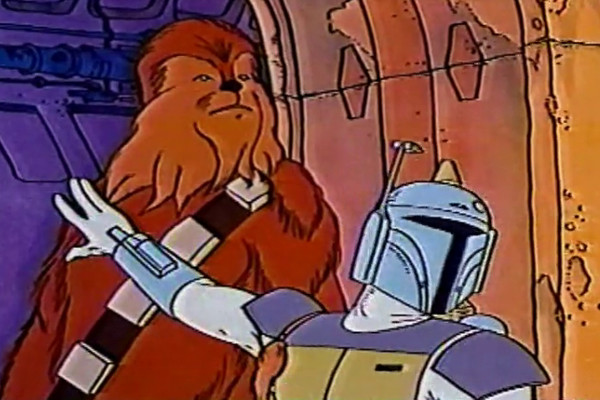
There's a natural desire to try to reclaim this special as a cult classic and not the disaster it's often purported to be, but... if anything, it's even worse than its reputation. Perhaps most inexplicable is the fact that it opens with nine minutes of Chewbacca's family by themselves... those Wookie aliens that can't speak any intelligible language. Fine for the cinema, where paying ticket buyers are already in their seats, but less ideal for a TV audience where a channel changer is in everyone's possession.
Broadcast in its entirety only once, many associated with this variety special are scathing of it, though it's George Lucas' extreme dislike for it (he was scarcely involved in its production) that means it's never been commercially released. The oft-cited highlight is a ten minute cartoon in the middle of the show that introduces Boba Fett. While undoubtedly the peak of the show, it's a mystery why a cartoon for children would have been broadcast to audiences at 9pm. Lowlights are many, though it's not known how many Star Wars fans were clamouring for a song routine with Bea Arthur back in '78.
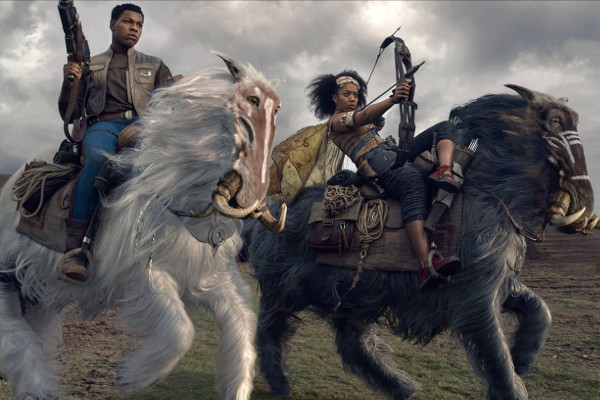
The review on this site of The Last Jedi likened the writing of this sequel trilogy to "picture consequences", whereby plot strands and characters are passed from one writer to another, and the entire thing unfolded to make something that doesn't quite resemble a perfect whole.
JJ Abrams returns to the series and the narrative once more doubles back on itself, while character motivations change from scene to scene. A mess of a movie, full of noise, explosions, exposition and plot developments that manage to be simultaneously ludicrous and predictable, both at the same time. In fact, the only thing the movie lacks is anything approaching soul.
While The Last Jedi had attempts at humour that were far too silly, the "humour" such as it was, at least existed within the fiction of the piece. With Abrams back in the chair, the humour once more turns meta, with characters practically winking to camera as mindless dirge happens around them. As bad as the prequels were, they at least had a consistency of vision which places them above this feeble last entry.
Star Wars was never a series for intellectuals, but this mess contains nothing to engage the "12 and over" audience the series is now aimed at. Ultimately this new take on Star Wars was one without a clear direction... not original enough to be new films, but not enough in awe of the past to be a continuation of them.
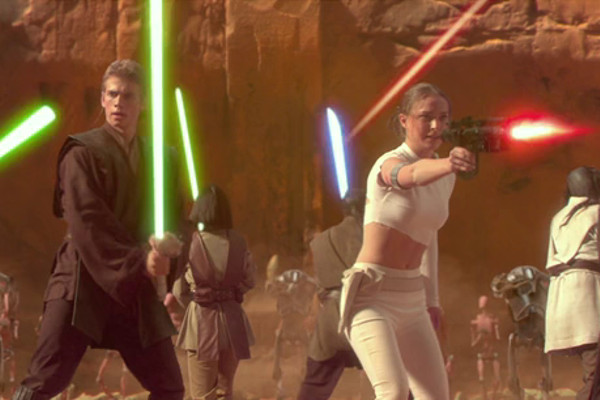
One serious issue with the prequels is how overinflated in length they are. Although their average runtime of 138 minutes is only around a quarter of an hour longer than the average of the original two films, it's an extended runtime that pushes the films to breaking point; glorified children's movies given an adult picture length. This is particularly notable with Attack of the Clones, the longest Star Wars until 2017, clocking in at 142 minutes.
There's a hair's breadth between this and the next two entries. What nudges it into this lowly position is the full realisation of the Jedi powers. The original trilogy had characters that, while archetypes, were relatable not only on an emotional level, but also a physical one; Attack has Jedis jumping hundreds of feet through the air like superheroes. There's only one instance of Luke Skywalker achieving a physical feat that a reasonably athletic regular person couldn't, and then it's with great effort. This also extends towards the lightsaber duels: visceral and emotionally engaging in the original trilogy; choreographed, overlong and clinically unengaging in the prequels.
It sounds like a small thing, but it extends to the prequels as a general point: they focus almost entirely on technical achievement at the expense of true audience involvement. Cementing the disconnect between the narrative and realistic coding, Attack is almost entirely played out in front of green screen. No matter how good the CGI is (and, 16 years on, it hasn't aged well) the mind will be able to detect what's real and what's artificial. It even extends to the performances, which are flat and disattached; Ewan McGregor as Obi Wan at least having the decency to look as if he's about to burst out laughing at the bad dialogue.
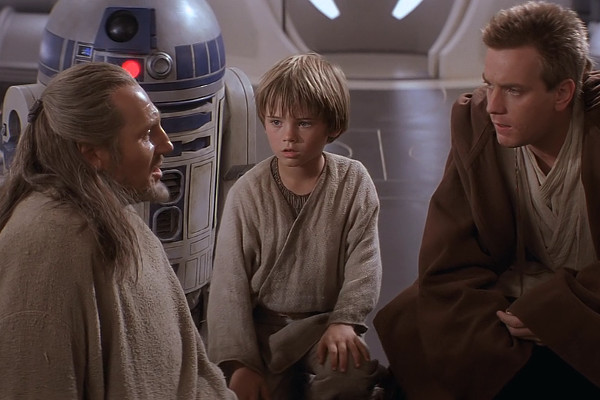
Now the best part of twenty years old, The Phantom Menace perhaps stands up better than could be expected. Perhaps it's that, divorced from the weight of expectation, it can be enjoyed on its own terms for what it is, rather than what the audience wanted it to be.
The dirgelike, impenetrable trade plot, questionable racial characteristics of certain aliens and the painfully unfunny antics of Jar Jar Binks (himself a questionable racial stereotype) are actually the least of the film's problems. While the CGI that crams every frame is dated, and there's little to no emotional involvement with the dull, underwritten characters, the most drastic problem is creating prequels in the first place.
Even putting aside revelations in later films which are now no longer surprises (most specifically the relationship between Luke and Vader), by having a prequel series which shows the downfall of the Jedi Empire, it must begin by having said Empire at the height of its powers. As a result the Jedi are almost indestructible, their enemies powerless against them, thus rendering the majority of the film dramatically inert. As the start of a saga, The Phantom Menace may be better than it seemed at the time, but as a film in its own right, it remains a narratively flaccid affair.
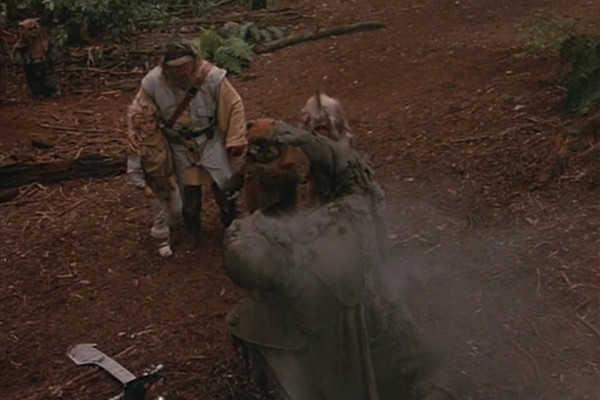
The second Ewok TV movie aired a year after the first on ABC, and, like the original, had a limited theatrical release in Europe. The original had its darker elements - an Ewok dies at the end, and star Eric Walker auditioned for the role by acting out a monologue about domestic violence - but Battle For Endor takes this down an even more disturbing route. Here, in a movie for kids, the 6-year-old child star has her parents and brother murdered before her within the first ten minutes. Going on as an orphan to help the Ewoks defend their land against marauders, it's a misjudged film that contains extreme threat throughout in a film for the very young, like the Care Bears meets Death Wish. The writer of the first movie went on to write further scripts for children... the two brothers who wrote this sequel went on to write horror movies.
Perhaps to alleviate the problems of the first, which required a narrator, here Wicket has learned how to speak English during his time with the family. Mysteriously, none of the other Ewoks have picked up on it, and, as it's supposedly set before the events of Return of the Jedi, he somehow forgot how to speak English by the time he met Princess Leia. This entry still threatens to overtake the painfully self-aware The Force Awakens as it remains consistent within itself and, while it does get a little silly as it goes on, it takes its own rules seriously. Ultimately, however, it's a film without an audience: too child-orientated for families, and far too dark and violent for the very people it's aimed at.
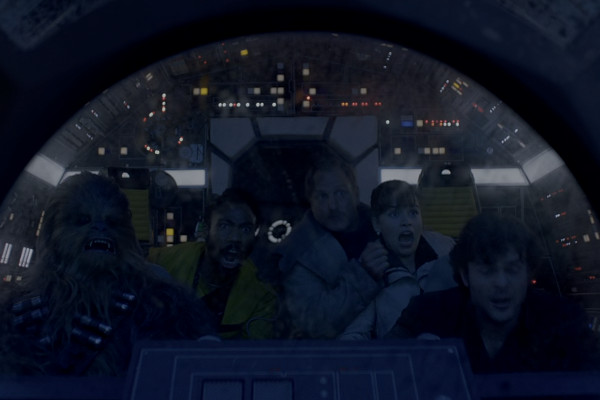
The problem with Solo isn't that it's a bland, underwhelming and empty film... it's that it has no real reason to exist. Answering questions that no one ever thought to ask (who thought Solo wasn't his real last name?) and giving motivation where none were needed, we end up with a film that concludes "okay, he DID shoot first, but there was a precedent for it."
Such anal fixations can only exist in a black-and-white, morally unambiguous world where Han's roguish, anti-hero qualities - ie. the very reason the character was popular in the first place - have to be explained away and justified. Really, the only question that needs answering is how Alden Ehrenreich, reportedly not even 5'8, grows to be the 6 foot plus Harrison Ford. Instead, this "join the dots", fannish method of filmmaking only serves to make the universe look smaller. No longer is the Han of Star Wars a rogue with a vast history and a long friendship with Chewbacca, but a greenhorn who's only just met his furry pal.
Emilia Clarke gives a customarily guileless performance and the script lurches between tedious laser zap setpieces, clumsy exposition and a total absence of genuine wit or inspiration. Lando Calrissian returns to the series at the hands of Childish Gambino, but instead of the touted pansexual maverick, he's a guy who cheats at cards and fancies a robot. (And shares the same height ratio difficulties as Ehrenreich, a 5'9 man playing another 6 footer). Phoebe Waller-Bridge fills out the cast, having a nothing role as a surly robot who makes innuendos about clitorises. Waller-Bridge's growing ubiquity and clear miscasting for this film threaten to undermine her appeal, and I say that as a huge Fleabag fan.
Solo features an hour-long plot in a 2 hour 15 minute movie, a brown filter throughout making a children's film "adult" when it clearly doesn't need to be. The final forty minutes or so are a particular slog, and the film is only tentatively better than Rise of Skywalker and maybe one or two of the prequels, despite being arguably the most tedious Star Wars film ever made. It flopped at the box office, failing to scrape even $400 million, something almost unheard of, and something that had consequences for further spin off movies.
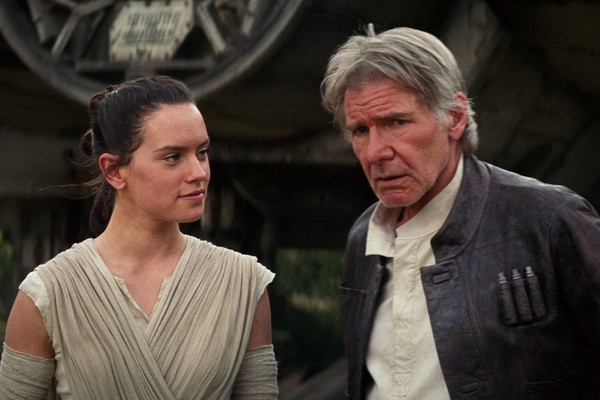
The Force Awakens takes the sensible route of "playing it safe", giving audiences a plot lifted wholesale from the original movie, and bringing back a bored-looking Han and Leia to ensure the audience feels in familiar hands. While such a decision is lacking in inspiration, it's nevertheless understandable, a financially viable "product" that took more than 2 billion at the box office.
However, even if the enormous plot contrivances that put it all together can be overlooked, what drags the whole thing down is the modern need for self-referential, postmodern dialogue. While the return to real sets and abandonment of the excessive green screen of the prequels is worthy of praise, the prequels at least took themselves relatively seriously. The new films are populated by characters giving constant winks to the camera and ironic call backs to the past. This self-aware deconstruction even extends to new characters commenting on how Han can understand what Chewbecca is saying, rather like having someone explain to you the punchline to your favourite joke.
Kylo Ren proves to be the most interesting and conflicted character on rewatches, though isn't really given chance to shine here. Finally, admidst the various online controversies around having a black actor as the lead, while John Boyega does a fine job with conflicting material, it seems to miss the basic point that the Stormtroopers of which he's a part are used as a Nazi metaphor, complete with unsubtle arm salutes. His presence among such a group undermines the thematic subtext of which it's trying to promote. It seems to matter little to Boyega's Finn, who goes on the run after being confronted by the horrors of killing people... then spends the rest of the film killing people.
While this movie basked in glowing reviews and high box office, it's worth remembering that some quarters also gave the same praise and commerce to The Phantom Menace upon its release.